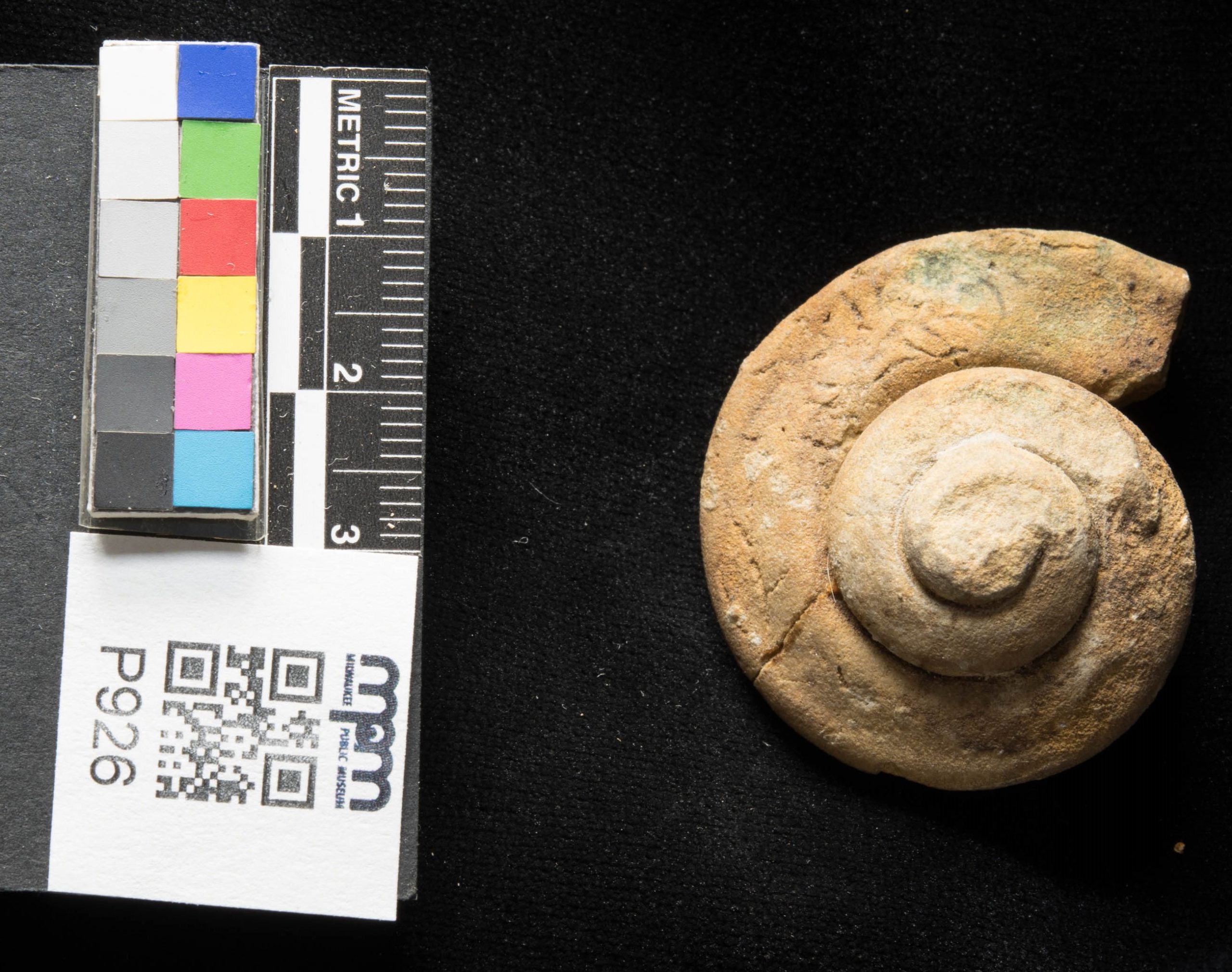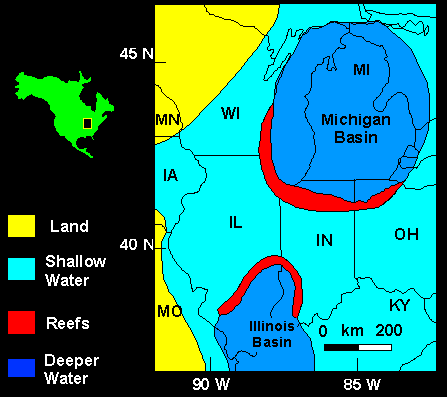
Correction: A previous version of the story incorrectly stated how long ago some of the changes to the Great Lakes happened.
The Great Lakes region wasn’t always the freshwater realm we know today: rewind to millions of years ago and it was actually covered in tropical seawater. That’s why many of the fossils found in the area today are portions of coral reefs and ancient sea creatures.
“When you think of Michigan or Illinois, you imagine cold and snow, but it wasn’t always that way. It was once more like the Bahamas or Brazil—nice and tropical. No snowmageddeon or polar vortices,” said Paul Mayer, fossil invertebrate collections manager at the Field Museum.

Silurian fossil (Image courtesy of Milwaukee Public Museum)
The reason behind this drastic climate shift is the former location of the Great Lakes region, which roughly 400 million years ago used to be on the equator.
“The area was very tropical and full of coral. When all of that coral eventually died and got buried by sediment, they turned into fossils. That’s what we’re finding now,” explained Crystal Czarniecki, assistant curator for the Earth Science Museum at the University of Waterloo.
However, for museum and fossil experts like Mayer and Czarniecki, knowing that background is only one piece of the puzzle. There are various other factors they analyze to fully get a glimpse of the historical context behind such fossils.
“I think what is really important about these fossils in context of both time and present day is that we can essentially create an ancient environment. By taking into account what the rock is that they came from, what kind of animals there are, what kind of animals they’re related to and other pieces of information, we can determine the environment from which they came and learn a little bit more about the history of the location,” said Jenifer Bauer, research museum collection manager at the University of Michigan Museum of Paleontology.
While the entire Great Lakes region underwent these changes, there were still major differences in the ways individual states developed and changed.
“During the Silurian period, there were still elevation changes occurring, so Michigan was in a bit of a basin, and water was deeper there. And, as you headed west towards Wisconsin, the land started to arch up. We call this the Wisconsin arch and the Michigan basin,” said Patricia Coorough Burke, manegold curator of the geological collections at the Milwaukee Public Museum.

Map of the Midwest during the Silurian period, 440-420 Mya (Image courtesy of Milwaukee Public Museum)
Beyond telling us about the region’s history, the presence of these fossils also enables us to obtain several of our natural resources today – like salts, oils and natural gas.
“All of the things that we mined around the Michigan and Great Lakes region is only here because of the sedimentary rock staddle and the way that it was formed,” stated Czarniecki.
Because of this, the preservation of this region and its environment is not only essential to these museum experts, but also to society as a whole.
“Fossil collecting is a great way to both learn a little bit about where you live in the history of the land in the landscape, but also have fun,” said Bauer.
For anyone interested in learning about coral and other forms of sea life specific to the Great Lakes and Great Lakes history, check out the list Great Lakes Now has curated of various museums around the region that are exhibiting Great Lakes fossils.

Milwaukee Public Museum fossil reef exhibit (Image courtesy of Milwaukee Public Museum)
Check out some cool fossils at these museums
Illinois:
Check out the largest collection of Mazon Creek fossils at this museum. With over 40,000 specimens, this museum has a vast variety of creatures on display. You can explore their Mazon Creek fossil invertebrates at their website.
Michigan:
University of Michigan Museum of Paleontology
One type of fossil this museum collects is brachiopods, which are clam-like creatures with two shells. Some of their brachiopods are particularly interesting, as they actually contain a collection of smaller organisms that live on top of them. You can further explore the museum’s collection at its website.
Ohio:
Cincinnati Museum of Natural History and Science
There are several more modern fossils from the Great Lakes Region here. Specifically, they house numerous specimens from the Silurian and Devonian time periods and contain a variety of mammals from the Ice Age.
Cleveland Museum of Natural History
Visitors here can view the museum’s incredible collection of fossils from the Devonian time period. This museum is known for their fascinating armored fish collection, so be sure to check it out if you’re in the area.
Ontario:
University of Waterloo Earth Sciences Museum
A specific fossil catalogued here is called “fossil hash”, meaning it is composed of various types of fossils. This specific sample consists of numerous brachiopods and bryozoans, which makes it rather large.
Washington D.C.:
Smithsonian National Museum of Natural History
This museum houses a large collection of fossils from Waukesha, Wisconsin. They even have some unique jellyfish impressions here, along with sand that contains arthropod footprints.
Wisconsin:
Home to some of the first-ever dimensional diagrams or life habitats, the Milwaukee Public Museum contains several interactive features. Their Muskrat exhibits allows visitors to actually look underwater to directly see how muskrats enter their habitats.
Catch more news on Great Lakes Now:
Sturgeon Restoration: Studying Michigan’s and Wisconsin’s current flourishing populations
Fossil Finds: Fleshy quarry fossils shed light on Wisconsin’s watery past
Featured image: Silurian fossil (Image courtesy of Milwaukee Public Museum)
3 Comments
-
“The Great Lakes region wasn’t always the freshwater realm we know today: rewind to a couple centuries ago and it was actually covered in tropical seawater.”
Wasn’t it many more years than 200? Correction needed.
-
Good catch. Thanks! – GLN News Director
-
-
“The Great Lakes region wasn’t always the freshwater realm we know today: rewind to a couple centuries ago and it was actually covered in tropical seawater.”
A couple of centuries ago? Really?




